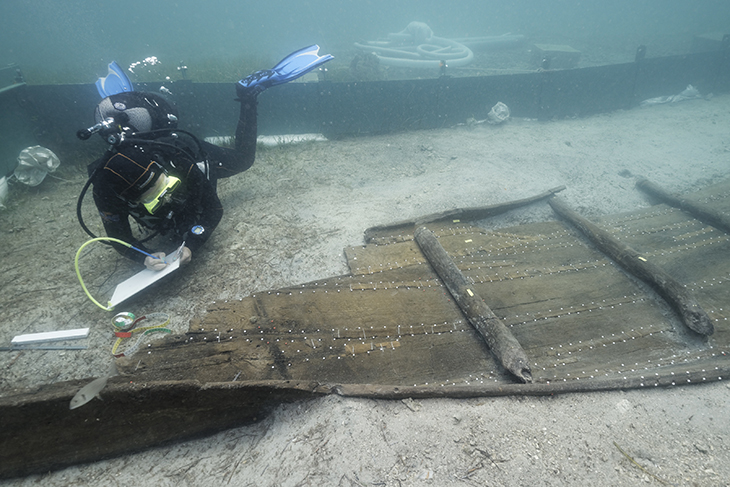
If you’ve ever been intrigued by underwater archaeology, you’d be amazed to learn about the exceptionally well-preserved shipwreck found in the depths. Its incredible condition might lead you to think it’s around 200 or 300 years old, but in reality, it dates back a staggering 3,000 years, making it the oldest hand-sewn boat ever discovered in the Mediterranean.
Known as the “Zambratija boat” due to its location in the Bay of Zambratija, this remarkable artifact came to light after reports from local fishermen reached the people involved. It stands as a remarkable testament to the ancient naval tradition that had once thrived and had been extremely common in the regions of Istria and Dalmatia.
“Its architecture and its construction, the assembly technique of the strakes, as well as the waterproofing system of the hull, have no equivalent in the Mediterranean area,” a representative from the Camille Jullian Center, a research organization connected to the CNRS, said in a statement made.
The French National Center for Scientific Research (CNRS) archaeologists are now underway as they’re working hard to prepare raising the boat from its submerged resting place. Within the 39-foot-long boat, a 23-foot section still remains in pristine condition, and special measures will be taken to ensure its preservation during transportation to the Archaeological Museum of Istria, where it will undergo desalination.
Apart from raising the boat, the scientists have ambitious plans. They intend to create a detailed 3D reconstruction of the vessel, determine a more accurate construction date, analyze the fibers used for sewing, and study the wood shaping techniques employed. Given the significance of these remains, the utmost care will be taken at each stage of the process to safeguard this extraordinary find.

Dinosaur fossils, rather than being actual bones, are mineralized imprints of bones, preserving the ancient creatures’ forms over millions of years. Similarly, wood submerged in water undergoes a remarkable transformation as water seeps into its every molecular pore, ultimately surpassing the wood’s original composition. Consequently, any movement of the waterlogged wooden remains could lead to their disintegration.
To prevent the decay of ancient shipwrecks and other waterlogged wooden artifacts, a clever solution has been devised using a water-soluble wax known as polyethylene glycol. This wax acts as a preservative by impregnating the wood and gradually replacing the water molecules present within it. As the wood is dried out, the polyethylene glycol forms a reinforcing component, enhancing the structural integrity of the artifact.
The study of fossilization and the preservation of waterlogged wooden remains showcase nature’s fascinating ability to transform and endure. By understanding and utilizing methods like polyethylene glycol treatment, we can safeguard invaluable relics from the past, offering a glimpse into the history of our planet and the civilizations that once thrived upon it. Through such efforts, we bridge the gap between ancient worlds and modern times, fostering a deeper appreciation for the wonders of our shared heritage.
What are your thoughts? Please comment below and share this news!
True Activist / Report a typo


